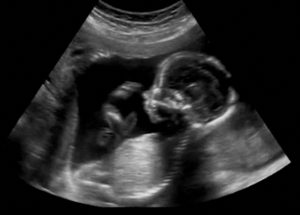Age-related macular degeneration (ARMD) is a degenerative vision loss that is most prevalent in people over 50 years of age. There are also a few studies on how young people can be affected by ARMD.
ARMD is characterised by the distortion or absence of visual fields, this age-related condition affects the central area of the retina known as the macula. As such, the central field of vision is usually affected, while the peripheral vision remains relatively intact. ARMD patients can live independently but will encounter difficulties completing tasks such as driving and sewing. Fortunately, ARMD does not tend to cause complete blindness.
ARMD is common in developed countries with an ageing population. It is a growing eye health concern for many countries with rapidly ageing populations, such as Japan, Korea and Singapore. While some research has demonstrated ethnicity as a risk factor, other research proves otherwise. In a 2011 meta-analysis, it was suggested that ARMD is as common in Asian populations as it is in Caucasian populations, with a prevalence of 6.8% for Asian people aged 40 to 79 years. The age-standardized prevalence was similar in 3 Asian ethnic groups: Chinese, 7.3%; Malay, 7.7%; and Indian, 5.7%. This prevalence increased with age, as expected, and was higher in males.
Risk Factors
- Age
- Genetic factors – family history of ARMD
- Smoking
- Nutritional factors (elevated high-density lipoprotein and high cholesterol intake)
- Ethnicity as a possible factor
ARMD is a Spectrum of Impaired Macular Conditions
ARMD encompasses a spectrum of impaired macular conditions. The disease progression ranges from drusen depositions and pigment changes in early and intermediate forms to one or more severe forms of ARMD. There are mainly two severe forms of ARMD: dry ARMD and wet ARMD.
- Dry ARMD is the most common form, here, photoreceptors in the macula gradually break down, leading to an accumulation of retinal deposits called drusens. This causes blurry vision in the centre of the affected eye which worsens progressively with time. Research evidence has demonstrated that there may be a genetic predisposition for this condition. Therefore, family members of patients over the age of 50 are strongly advised to have yearly eye examinations.
- Wet ARMD is caused by the growth of leaky blood vessels in the choroidal layer of the retina, leading to leakage of blood into the eye chamber. This form of ARMD tends to cause sudden and dramatic vision loss which can be worse than that of dry ARMD. In some instances, dry ARMD might progressively develop into wet ARMD.
Brief Overview of ARMD Symptoms
- Problems with near work such as reading, sewing
- Difficulty in driving and facial recognition
- Distorted central vision (for example, straight lines look wavy)
- Blurred central vision in one or both eyes
- Blank or dark spots
- Decreased sensitivity to contrast
- Complete loss of central vision
Clinical Diagnosis
Some tests used for diagnosis could include:
- Basic eye examination: checking visual acuity and intactness of visual field
- Dilation of the pupil: so the examining doctor can look at the back of the eye clearly
- Optical coherence tomography (OCT): taking cross-sectional images of the retina
An optometrist or ophthalmologist should be the first point of contact if you experience any eye-related symptoms. Please refrain from self-diagnosis and self-treatment. In most cases, early detection and treatment can lead to better outcomes.
Treatments
There are presently no cures available to treat ARMD. Present treatment modalities aim to slow disease progression and maintain as much vision as possible for patients.
Unfortunately, there are no treatment options to reverse the effects of dry ARMD. However, some treatment options available for wet ARMD include:
- anti-VEGF Injections: This is by far the most common treatment which involves the injection of a medication that stops fluid and blood from leaking out from blood vessels in the back of the eye. The therapy alone should be sufficient for most patients. However, the injection is needed once a month or as prescribed by the treating team.
- Laser treatment: laser beams are inserted into the eye to seal and destroy leaky blood vessels. This is an alternative treatment used when the leaky vessel is away from the centre of the macula.
- Photodynamic therapy (PDT): patients are given a light-sensitive drug intravenously, and a specially designed laser is used to activate the medication to close off abnormal blood vessels. It is sometimes used alongside anti-VEGF injections.
Apart from keeping up with treatments, patients are advised to undergo diet and lifestyle modifications, and encouraged to monitor the progression of their vision loss. Most importantly, ARMD patients should consult their eye doctors regularly.










